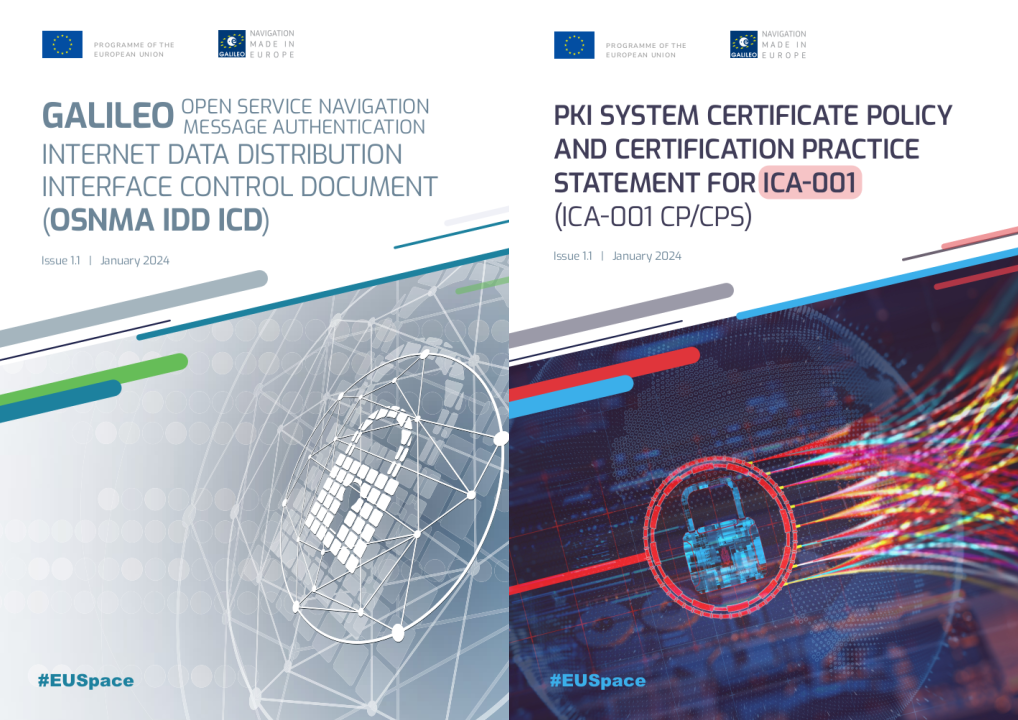The publication of an updated version of the Galileo OSNMA Internet Data Distribution (IDD) Interface Control Document (ICD) and the Certificate Practice and Certificate Practice Standards (CS/CPS), together with the OSNMA operational cryptographic material, will allow users and receiver manufacturers to finalize the implementation of the OSNMA protocol in advance of the OSNMA Initial Service provision phase.

The European Union Agency for the Space Programme (EUSPA) together with the European Commission have published an updated version of the Galileo Open Service Navigation Message Authentication OSNMA IDD ICD and the CS/CPS). These documents provide the specifications applicable to the OSNMA cryptographic material and associated certificates that can be retrieved from the IDD interface, and include the provision of a PKI certificate signing the Merkle Tree as well as the steps to be followed by the manufacturers for the Merkle Tree root verification and receiver initialization.
Together with this publication, the OSNMA operational cryptographic material, including a new Merkle tree, and the associated certificates are now available in the IDD interface and are being used to generate the OSNMA SiS. The OSNMA operational cryptographic material and associated certificates are to be used as part of the OSNMA Initial Service provision phase.
Furthermore, users are informed that the minimum equivalent tag length, 𝐿t𝑚𝑖𝑛, corresponding to the minimum number of tag bits to be verified for a given navigation data set is set to 40 bits, configuration that will be maintained as well for the OSNMA Initial Service provision phase. Further details on the use of this parameter can be found in the Galileo OSNMA Receiver Guidelines.
All these elements allow users and receiver manufacturers to finalize the implementation of the OSNMA protocol in advance of the OSNMA Initial Service provision phase, expected to start in the coming months after the completion of related service validation activities.
You can find the document in the Electronic Library of the GSC website.
Media note: This feature can be republished without charge provided the European Union Agency for the Space Programme (EUSPA) is acknowledged as the source at the top or the bottom of the story. You must request permission before you use any of the photographs on the site. If you republish, we would be grateful if you could link back to the EUSPA website (http://www.euspa.europa.eu).